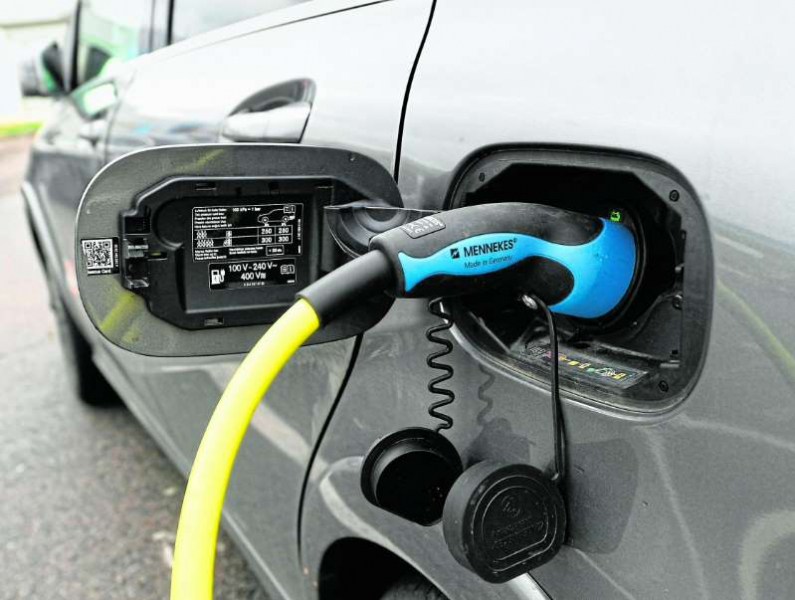E-Control: Three quarters do not know the costs before they fill up with electricity. Relieve the evening peak, reward slow-loaders with a tariff discount.

The electricity charging tariffs for electric cars should become more transparent and should only be based on the amount of energy used – and electric cars should be able to be easily refueled at work during the day. These demands were made on Tuesday at a meeting of the regulatory authority E-Control.
In order to achieve the e-mobility goals, the charging infrastructure and networks must be expanded, and there should also be a “right to plug” for tenants.
Greater transparency
“Around three quarters do not know how high the cost of charging will be before loading,” said E-Control board member Wolfgang Urbantschitsch. Transparency must be greater here.
A legal basis is necessary for price comparison of the charging contracts. Such a tool could work like the E-Control energy price calculator with electricity and gas prices. “It would be good if this could be expanded and linked to the directory of e-charging stations operated by us,” said Urbantschitsch.
Changed billing
Around 85 percent of people would like to be billed for their charging according to the amount of energy used, said Bernhard Hintermayer, who is responsible for parking + rest and multimodality at Asfinag in the group management. That is the way to go, even if there are still no calibrated devices for pure energy billing for e-car refueling in Austria today. Customers wanted automatic Plug & Charge billing.
The lack of clarity as to whether a separate customer account is required or worries about prices being too high were most frequently cited as reasons why someone has not yet refueled at public charging stations on the motorway and expressway network. This fear of prices is unfounded, unlike with fuel, you should make sure that refueling is not more expensive here than elsewhere, says Hintermayer.
Route still unclear for trucks
Asfinag has equipped 30 of its 87 rest stations with charging stations, and four more are to be added this year. At the end of 2021 / beginning of 2022, they want to have a charging station every 65 kilometers on average. In the case of trucks, the way forward is still unclear, “the one leading technology” is still missing here, which is not exactly good for the transport sector.
E-Control board member Andreas Eigenbauer advocated enabling electric cars to be charged as much as possible at workplaces, ideally linked directly to photovoltaic systems. In this way, the evening hours, which are increasingly being used by e-cars, could be defused and the vehicles could serve as storage for renewable solar power.
Ranges lower in winter
E-mobility is a partner for energy efficiency and CO2 reduction, but a competitor for renewables, because meeting electricity needs in winter is difficult anyway, but electric cars would then need more energy. The e-car ranges would decrease significantly in winter, with 30 percent e-car share, this sector is in competition with air heat pumps on the consumption side.
Bernhard Kern from the E-car user platform EletroMobilitätsClub (EMC) also campaigned for a “right to plug” for rental apartments and criticized the fact that there is currently an ignorance or an unclear legal situation about housing. The question of what to pay for the drawer and where must be answered clearly. Billing must be based on kilowatts (kW) and should not include a time tariff.
7,800 charging points
Urbantschitsch referred to the planned introduction of service accounting on all network levels (“Tariffs 2.1”). Measuring performance instead of work increases causal justice and strengthens efficiency. In total, the revenues of the network operators would remain constant, but households who behave in a way that is beneficial to the network or who charge their e-car slowly will be rewarded – for which households are charged a higher network usage fee for fast charging, according to Urbantschitsch.
Austria currently has around 7,800 charging points in around half as many public charging stations, and there were around 225,000 public charging stations across the EU at the end of 2020. In 2019, there were one million pure e-cars and 0.8 million plug-ins in the EU, out of around 250 million vehicles.
EU goals
The EU Commission's goal is at least 30 million e-cars in the EU and 3 million public charging stations by 2030. In Austria at the end of 2020 only 0.9 percent of the cars were “Stromer”, including hybrid cars it was 2.6 percent of the car population of 5 million units.

